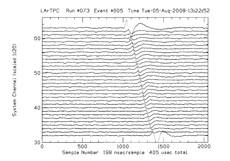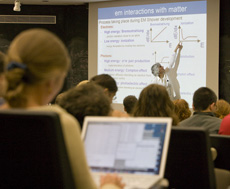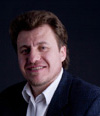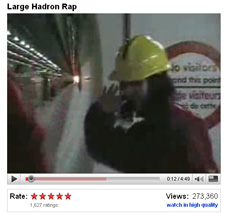|
Wednesday, Aug. 13
3:30 p.m.
DIRECTOR'S COFFEE BREAK - 2nd Flr X-Over
4 p.m.
Fermilab Colloquium - Curia II (NOTE LOCATION)
Speaker: C. Walter, Duke University
Title: Experimental Neutrino Physics
Thursday, Aug. 14
2:30
Theoretical Physics Seminar - Curia II
Speaker: H. Nielsen, Niels Bohr Institute
Title: New Bound States Containing Several Top Quarks Bound by Higgs Exchange
3:30 p.m.
DIRECTOR'S COFFEE BREAK - 2nd Flr X-Over
THERE WILL BE NO ACCELERATOR PHYSICS AND TECHNOLOGY SEMINAR TODAY
Click here for NALCAL,
a weekly calendar with links to additional information. |
|
Wednesday, Aug. 13
- Beef barley
- Fish & chips
- Smart cuisine: Caribbean grill salmon
- Liver w/onions
- Beef & cheddar Panini w/sautéed onions
- Assorted slice pizza
- Cavatappi pasta w/Italian sausage & tomato Ragu
Wilson Hall Cafe Menu |
|
Wednesday, Aug. 13
Lunch
- Stuffed summer vegetables
- Peach & strawberry shortcakes
Thursday, Aug. 14
Dinner
- Closed
Chez Leon Menu
Call x4598 to make your reservation.
|
|
|
First particle tracks seen in liquid-argon detector
 |
| Hans Jostlein (left) and Kelly Hardin prepare the liquid-argon time projection chamber for lowering into "Bo," the cryostat. |
Last week, scientists at Fermilab recorded for the first time tracks of charged particles using a small time-projection chamber filled with liquid argon. The LAr TPC is a promising technology that perhaps could allow for the construction of large, cost-effective detectors for future neutrino experiments.
"It's a significant step for the liquid argon program at Fermilab," said Stephen Pordes, who leads the small team of people working on "Bo," the liquid argon electronics test station, and "Luke," the liquid argon materials test station. Fermilab engineer Terry Tope, who designed the cryogenics systems for Bo and Luke, named the two test stations after the cousins in the "Dukes of Hazzard," a U.S. TV series from the 1980s set in Georgia. The cryostats, which keep the liquid argon in the two test stations at a temperature of 87 Kelvin, came from a company in Georgia.
Cary Kendziora and his crew of technicians assembled the test stations. "They did a beautiful job," said Tope. "It's great craftsmanship."
After receiving safety approval on Aug. 1, the team filled Bo with liquid argon for the first time on Monday, Aug. 4.The next day the team recorded its first tracks of cosmic rays.
Bo contains a cylindrical time projection chamber that is 50 cm high and 20 cm in diameter. Electrons knocked loose by charged particles traveling through the liquid argon inside the chamber drift along an electric field towards three wire planes at the top of the chamber. One of the major challenges that Kendziora and Tope met was to remove any impurities in the liquid argon, such as oxygen, that would absorb those electrons before they reach the wire planes.
Another major challenge was the design of the electronics to amplify and record the signals received by the wire planes.
"When you are looking for an electrical signal caused by 20,000 electrons hitting a wire, you have to be concerned about electrical noise," said Carl Bromberg, a physics professor at Michigan State University. "That's the major difficulty: to get a good signal-to-noise ratio. On each wire, we expect the noise to be 1,000 electrons." Dan Edmunds and Philippe Laurens of MSU provided the electronics and the data acquisition system, which "worked flawlessly," according to Pordes.
Read more
-- Kurt Riesselmann

The liquid-argon time projection chamber saw its first particle tracks Aug. 5. This graph shows the electric pulse caused by a cosmic ray crossing the chamber.
|
HPCSS08 pack One West

Graduate and postdoc students attending the third CERN-Fermilab Hadron Collider Physics Summer School pack One West Tuesday. It was the first day of the nine-day school, which will teach students about the theoretical and experimental foundations of hadron collider physics. Those who are not registered can view the lectures via live streaming video.
Read more information about the daily schedule and academic program.
|
Our work, in the name of science
From Beacon News, Aug. 9, 2008
There's nothing sadder than when something enjoyable comes to an end. That is the melancholy state in which I find myself right now.
For the past 18 months, I was fortunate enough to be part of a citizens' task force. The experience was not only satisfying, but it also cemented my belief that an appropriately diverse group of citizens can confront controversial local issues and even arrive at sensible solutions.
My experience was with the ILC Citizens Task Force. ILC stands for International Linear Collider, an immense scientific research machine that neighboring Fermilab hopes to build some time in the next decade. Although mostly underground, its 20-mile length would extend well outside of Fermilab's boundaries, reaching into Aurora on one end and up toward St. Charles on the other. Its construction and operation, including land acquisition, would impact all the communities in our area.
Read more
Read Tuesday's Beacon News story on the ILC Citizen's Task Force.
|
|
|
The future begins today
Vladimir Shiltsev, director of the Accelerator Physics Center, wrote today's column.
 |
| Vladimir Shiltsev |
For Fermilab, advances in accelerator technology are vital. Over the past several months I have participated in a number of reviews, workshops, advisory committees and conferences on research for future accelerators. Scientists are making progress on many accelerator R&D projects and have generated many new ideas. For example, researchers reported on a new plan of accelerating particles in a vacuum using a laser (LACARA experiment) at the Advanced Accelerator Concept workshop at the end of July.
The accelerator science field is as active as ever, with more than 15 percent of the DOE Office of High Energy Physics budget devoted to accelerator R&D. The challenge is to identify the most promising approaches. In September, DOE will conduct an across-the-field review of accelerator science to assess its status and to provide recommendations on the optimal strategy to support high-energy physics in the U.S.
The general accelerator technology development in the U.S. is multifaceted. It includes work on both normal conducting and superconducting RF acceleration technologies, which are applicable to the International Linear Collider, Project X and a muon collider; the development of stronger magnets for the LHC upgrades; and R&D on accelerator techniques, such as beam plasma or laser plasma, which may become the basis for a "beyond-next" generation of accelerators.
The P5 recommendations, presented at the end of May, call for support of general accelerator technology development and encourage further studies to achieve a multi-TeV lepton collider. In addition to the proposed ILC, the two most attractive alternatives are the Compact Linear Collider, which would create collisions between electrons and positrons, and a muon collider. Fermilab plays a leading role in the muon collider studies and leads the organization of the U.S. effort to demonstrate its feasibility by 2012-13.
In its report last fall, the Fermilab Steering Group called for more muon collider research and reorientation for energy-frontier colliders of advanced accelerator R&D efforts toward exploring techniques needed, such as emittance generation, control and manipulation. The backbones of the accelerator research that assure our laboratory's future could become a new muon accelerator research facility, which would expand future facilities for the proposed muon-to-electron-rare-decay experiment and could use the Project X linac beam in the future, and an advanced accelerator R&D center based on our SCRF cryomodule test facility in the New Muon Lab.
There is a long road ahead of us. The sooner we start, the sooner the future will arrive.
|
Encore

The buzz about the LHC rap video, done by former CERN Office of Communication employee Katie McAlpine, keeps growing. Fermilab Today has been inundated with e-mails about the video. In case you missed the video when we ran it the as part of a New York Times story on July 31, here it is again.
|
ES&H weekly report, Aug. 12
This week's safety report, compiled by the Fermilab ES&H section, lists two
incidents. ES&H is reviewing whether the second incident was work-related. Find the full report here.
Safety report archive
|
|
Have a safe day!
Day Camp extension
If there is sufficient interest, Fermilab's Day Camp may extend its program through Aug. 20, for families whose children don't start school until then. The camp must have five camper reservations in order to offer the program, and can accept up to 10 campers. Camp hours will be from 8 a.m. - 4:30 p.m. The extended session will cost $20 per day per camper. Anyone interested can sign up for one, two or three days. Contact Kathy at x5427.
Aug. 21 deadline for University of Chicago Tuition Remission Program
The deadline to apply for the tuition remission program at the University of Chicago for the Fall 2008 quarter is Aug. 21. For more information and enrollment forms, contact Nicole Gee at x3697 or visit the Web site.
URA Visiting Scholars Program applications due Sept. 10
The application deadline for the next round of scholarships for the Universities Research Association's Visiting Scholars Program is Sept. 10. The program will support visits by researchers from URA member institutions to work at Fermilab for periods of up to one year. More information.
Benefit Customer Service Survey
The Benefits Office invites you to participate in a customer service survey. We will use the feedback to evaluate the current service level and compare the results to customer service standards. We appreciate your assistance in gathering this data.
The survey is available in the Benefits Office, WH 15th floor or on the Benefits Office Web site.
Additional Activities
|
|